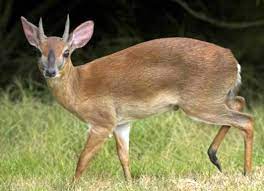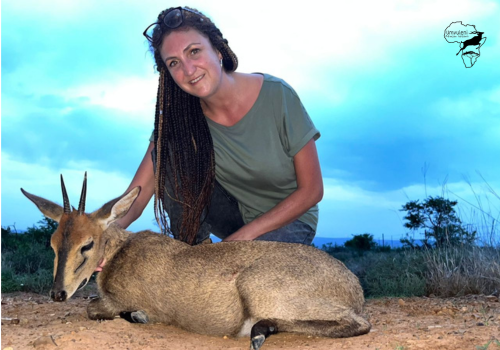
TINY 10 HUNTING
Hunting the elusive Tiny Ten is a specialized pursuit close to our hearts. We've pursued these small beauties in diverse habitats, employing rifles, shotguns, and bows.
Achieving the Tiny Ten goal typically requires dedicating 21 days to hunting. Due to their vulnerability to poaching and increased demand for hunting, their populations have dwindled in some areas, resulting in higher prices.
Specialized hunts like these require knowledgeable guides to avoid disappointment. They may not be inexpensive, but they're worth every penny.
Logistics: Tiny Ten hunts occur across South Africa, Namibia, and possibly Mozambique. Personal consultation with the hunter is essential to tailor the experience and determine the duration needed to achieve their objectives. These hunts can also be combined with our Plains Game offerings.
PRICING:
Daily fees:
$550.00 per Hunter
$175.00 per Observer
Airport Transfers:
Arrangements for airport transfers will be made based on the specifics of the safari once the hunter's preferences are clear.
SPECIES TROPHY FEES:
Duiker Blue
$2200
1st Safari
Duiker Common
$600
1st Safari
Duiker Red
$2500
2nd Safari
Grysbuck Cape
$2200
1st Safari
Grysbuck Sharpes
$3950
2nd Safari
Klipspringer
$1750
1st Safari
Oribi
$2500
1st Safari
Steenbok
$400
1st Safari
Suni
$3500
2nd Safari
Damara Dik-Dik
$3500
3rd Safari Namibia
THE SPECIES

The grey or common duiker is a shy, small species of antelope usually encountered on his own. The solitary antelope is mostly active in the late afternoon and early evening when he ventures out to browse.

The tiny Steenbok is a sought-after member of the 'Little Five' antelope species and makes a great full mount trophy. They are highly cautious with keen senses - and you'll need to be light on your feet during the hunt.

The tiny blue duiker makes for a very unusual trophy. The blue duiker is the smallest member of the duiker family and one of Africa's tiniest antelope species. The hunt can be challenging, as they often hide in dense undergrowth.

This attractive mini-antelope species clocks somewhere in size between its blue and grey cousins. You'll pursue the secretive red duiker in dense forests, coastal brush, or mountain slopes with thick brush.

This tiny and elegant antelope is one of the smallest antelopes. Suni’s prefer thick bush as their natural habitat. Because of its low numbers the Suni is under very strict protection. At the sight of danger, the Suni will stand very still but when the danger is too close they will take off in a flight.

The Damara dik-dik, is the Namibian version of the more common steenbok, although a lot more rare. Dik-dik has a special adaptation to control its body temperature in extreme weather conditions.
The Damara Dik-Dik browses mainly leaves, but also feeds on herbs, flowers, and pods. The Damara Dik-Dik is distributed through south western Angola, central and north western Namibia. The dik-dik is a rare and therefore protected species.

Sharpe's Grysbok is a shy antelope, which is slightly smaller than the Cape Grysbok, and which has a thick-set body and a rich rufous-coloured coat 500 mm at the shoulder and weighs eight kg as an adult.
A mingling of white and rich rufous hair on the back and sides gives this species a wiry grizzled appearance. Only rams have horns, which are 60-100 mm in length.

The Cape Grysbok is a small, shy antelope with a thick-set body and a coarse coat of hair. A mingling of white and reddish hair on the back and sides.

The klipspringer is an attractive little antelope aptly named for its rather riveting ability to 'spring' from rock to rock. You'll typically pursue the klipspringer in areas with rocky or mountainous terrain.

The little Oribi is slightly larger than the Steenbok but far less common. It's typically only on the lists of the most serious African trophy hunters looking to augment their collection with something special.
GALLERY
CONTACT US TO BOOK YOUR HUNT
Newsletter
Subscribe for regular specials & updates.
Created with © systeme.io














